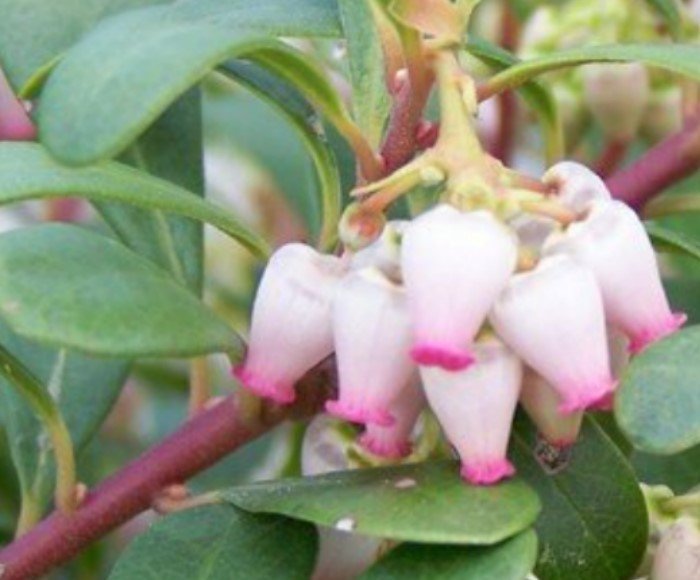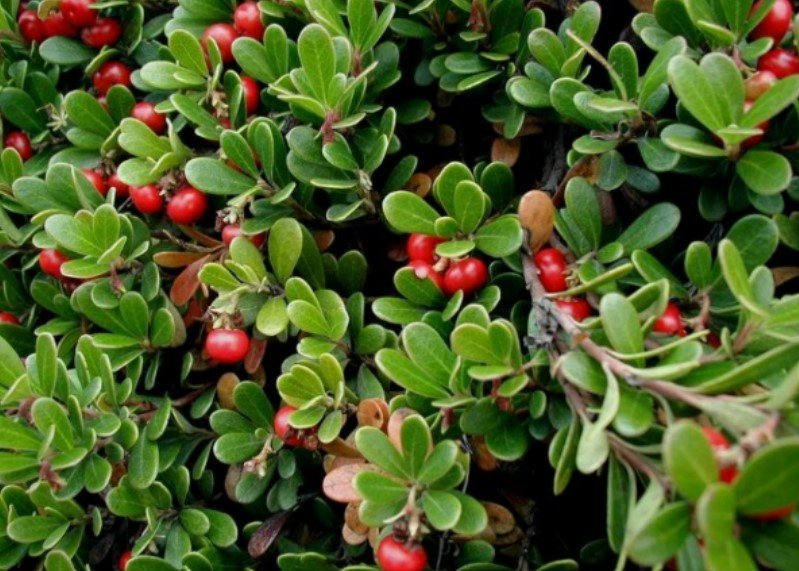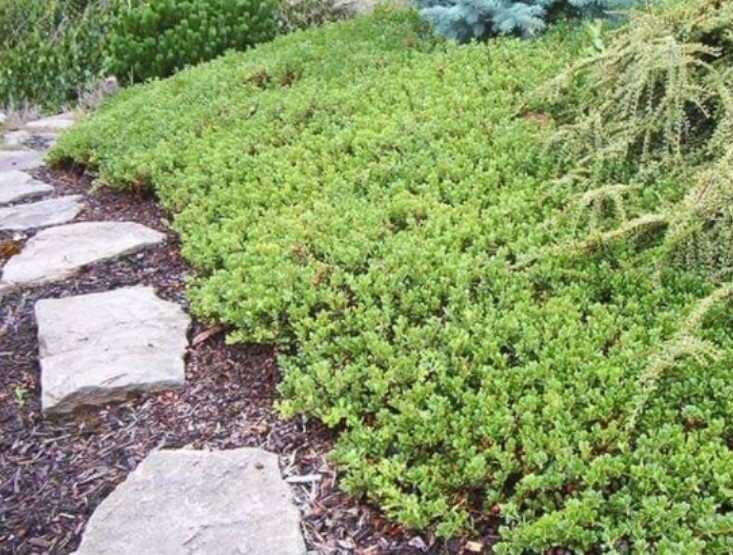 Image 1 of 3
Image 1 of 3

 Image 2 of 3
Image 2 of 3

 Image 3 of 3
Image 3 of 3




Arctostaphylos uva-ursi 'Massachusetts' (Kinnikinnick cultivar)
This cultivar of a popular native evergreen groundcover features pale-pink to creamy flowers and grows 8-12 inches tall at maturity. It forms a dense, spreading mat of a width of 4 ft. or more, but must be occasionally sheared to keep foliage full from the original plant.
It grows in many soil types, including rocky, sandy soils. Best in full sun, but tolerates partial shade and becomes drought tolerant once established. Its small urn-shaped blooms attract hummingbirds in the spring and its lustrous, thick green leaves act as a host plant for several butterfly species.
Bright red fruits are eaten by birds in winter as well as by bears; consequently one of its common names is Bearberry (and also as Kinnikinnik, from the Algonquin).
Our local Kinnikinnik species are found on our South Salish prairies and in well-drained bluffs, however Kinnikinnik is native to much of North America and other parts of the Northern Hemisphere, and was used for various medicinal purposes by many Native American tribes.
Deer resistant and thrives in drought!
This cultivar of a popular native evergreen groundcover features pale-pink to creamy flowers and grows 8-12 inches tall at maturity. It forms a dense, spreading mat of a width of 4 ft. or more, but must be occasionally sheared to keep foliage full from the original plant.
It grows in many soil types, including rocky, sandy soils. Best in full sun, but tolerates partial shade and becomes drought tolerant once established. Its small urn-shaped blooms attract hummingbirds in the spring and its lustrous, thick green leaves act as a host plant for several butterfly species.
Bright red fruits are eaten by birds in winter as well as by bears; consequently one of its common names is Bearberry (and also as Kinnikinnik, from the Algonquin).
Our local Kinnikinnik species are found on our South Salish prairies and in well-drained bluffs, however Kinnikinnik is native to much of North America and other parts of the Northern Hemisphere, and was used for various medicinal purposes by many Native American tribes.
Deer resistant and thrives in drought!
This cultivar of a popular native evergreen groundcover features pale-pink to creamy flowers and grows 8-12 inches tall at maturity. It forms a dense, spreading mat of a width of 4 ft. or more, but must be occasionally sheared to keep foliage full from the original plant.
It grows in many soil types, including rocky, sandy soils. Best in full sun, but tolerates partial shade and becomes drought tolerant once established. Its small urn-shaped blooms attract hummingbirds in the spring and its lustrous, thick green leaves act as a host plant for several butterfly species.
Bright red fruits are eaten by birds in winter as well as by bears; consequently one of its common names is Bearberry (and also as Kinnikinnik, from the Algonquin).
Our local Kinnikinnik species are found on our South Salish prairies and in well-drained bluffs, however Kinnikinnik is native to much of North America and other parts of the Northern Hemisphere, and was used for various medicinal purposes by many Native American tribes.
Deer resistant and thrives in drought!
